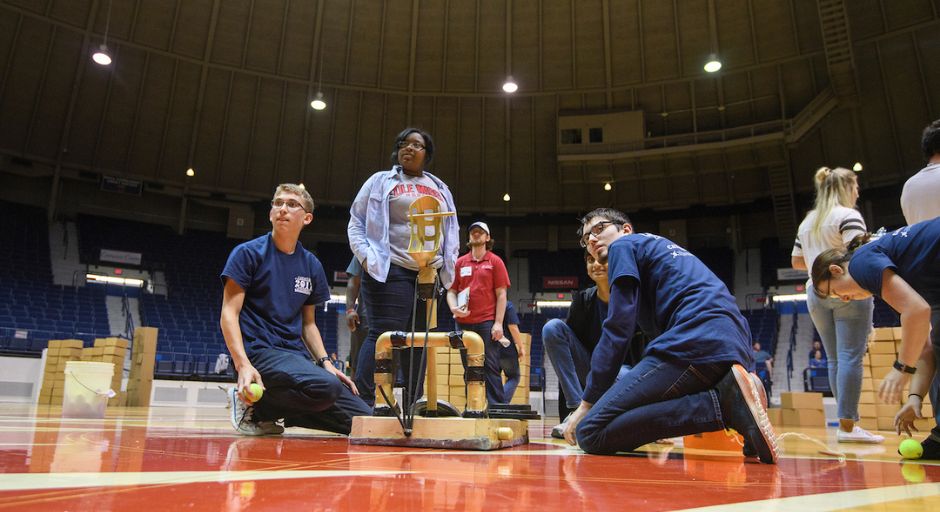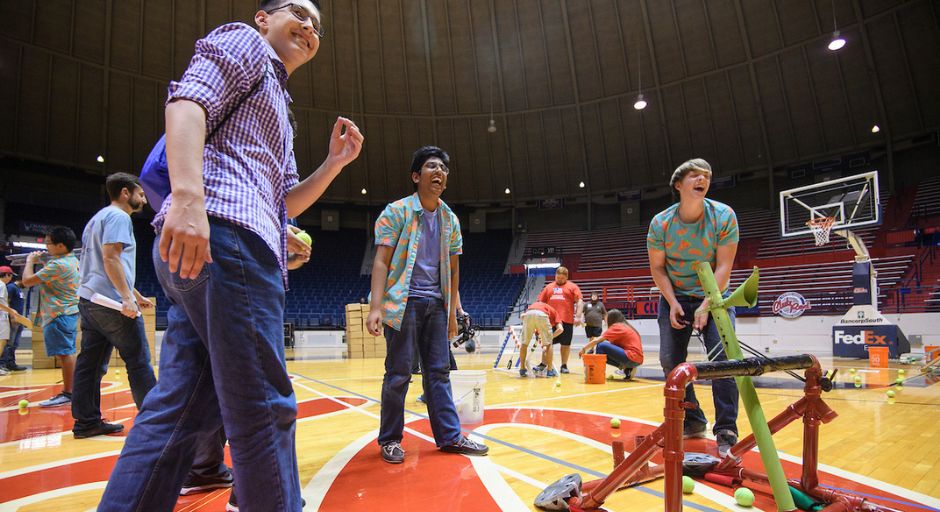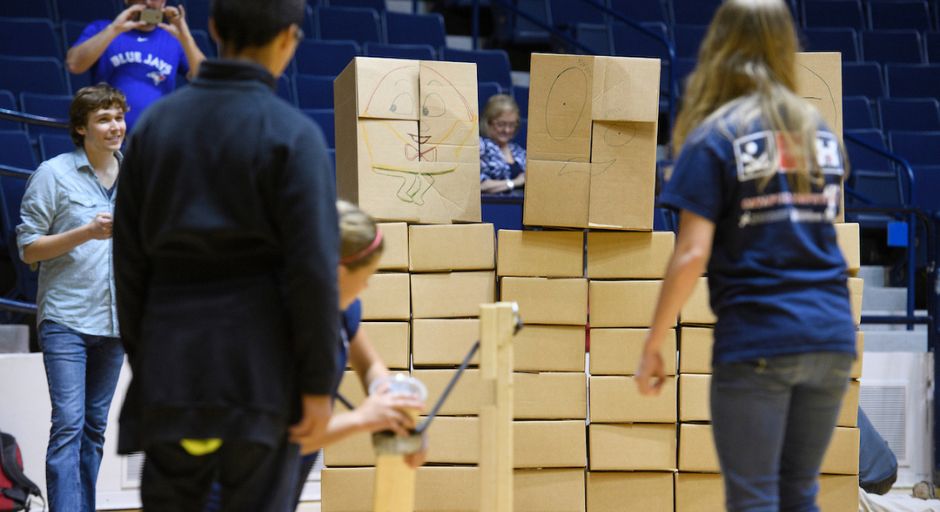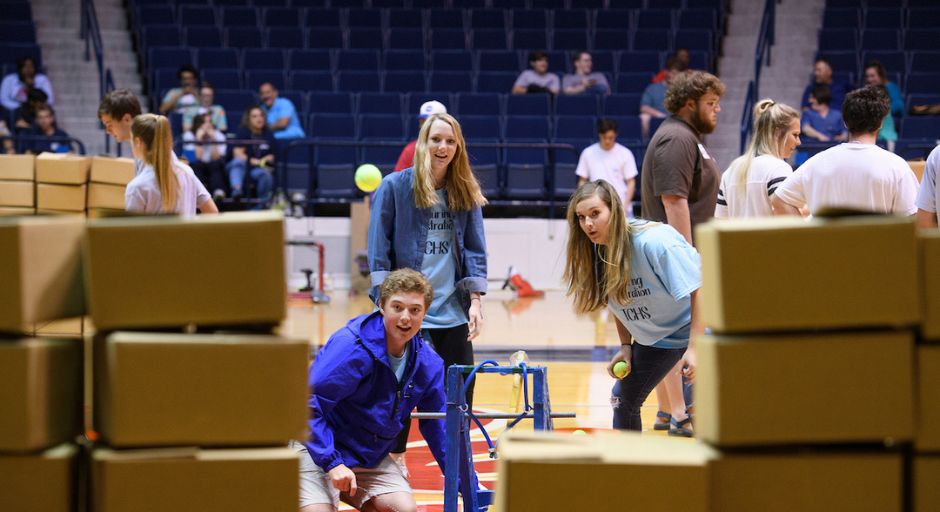Catapult Competition
The Division of Outreach, the School of Engineering, and the CMSE invite Mississippi students and teachers to participate in an exciting science and engineering event!
Catapult Your Way to Victory
The Catapult Competition is hosted by the Division of Outreach, the School of Engineering, and the Center for Mathematics and Science Education at the University of Mississippi.
- Why would we do this? Simple. We want to meet the best middle and high school surgical-tube catapult builders in Mississippi.
How does the Catapult Competition at UM work?
While some aspects of the competition can change year over year. Here's a quick run down of what you can expect. Teams of 2-4 students in middle school and high school are invited to participate in this exciting event.
Teams compete in 5 challenges
- Design
- Catapult Cornhole
- Humpty Dumpty
- Siege the Castle
- Art & Aesthetic
Registration is $100 per team of 2-4 students. There is a limit of 3 teams per school.
Rules for the 2025 Catapult Competition: 2025 Competition Rules
Frequently Asked Questions
Want to know more about the Catapult Competition? Our FAQ can help.
The maximum height from the ground cannot exceed five feet while the throwing arm is in its rest vertical positions.
- Just to clarify, the catapult will be measured in its “rest” position with the surgical bands relaxed. Generally speaking, the 5 feet restriction is the maximum possible height the catapult can measure.
For example, if you are using a stop bar to control the launch angle, it would be the maximum angle, the catapult at rest, and measured to the top of the launch cup.
This requirement means that the machine will have one end of the surgical tubing connected to the throwing arm and the other end of the surgical tubing connected to the frame – this will provide the rotation.
As long as they are stretched linearly, it is within the rules.
Absolutely, any commercially available off the shelf parts should be acceptable. We are more concerned with the catapult meeting the safety requirements than necessarily what parts you choose.
As an engineer, we could not, in good conscience, limit your ability to be creative.
We don’t necessarily count against teams for cost, but it is a consideration for designs that are close during judging.
It may be a good idea to separate out the form and function costs. For example – make a value assessment of the catapult with and without the extra cosmetic parts, meaning one assessment with the fancy paints and props and a separate assessment that is the actual catapult (everything the catapult needs to fully function).
We have a physical limit of 16 teams for the competition, and we want to make the competition open to as many schools as possible. Should the time approach where we are short of 16 teams, we will reach out to schools that have more than 3 competing to see if they would like to register any other teams.
Center for Mathematics and Science Education
The Center for Mathematics and Science works to improve mathematics and science education in Mississippi by fostering interaction between academic and K-12 communities, support the implementation of research-based methods in the classroom, and promote interest in the fields of science, technology, engineering and mathematics (STEM).






